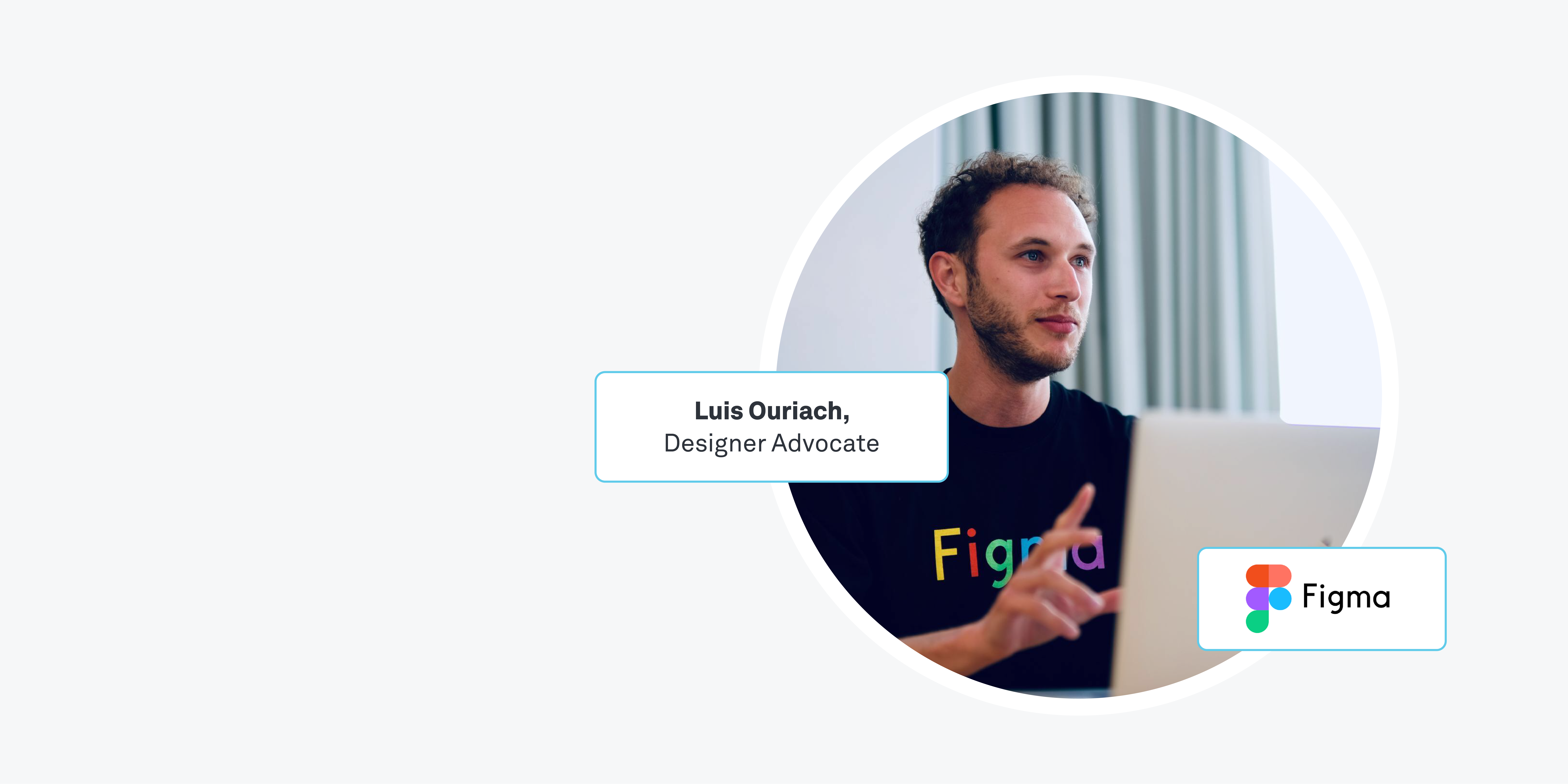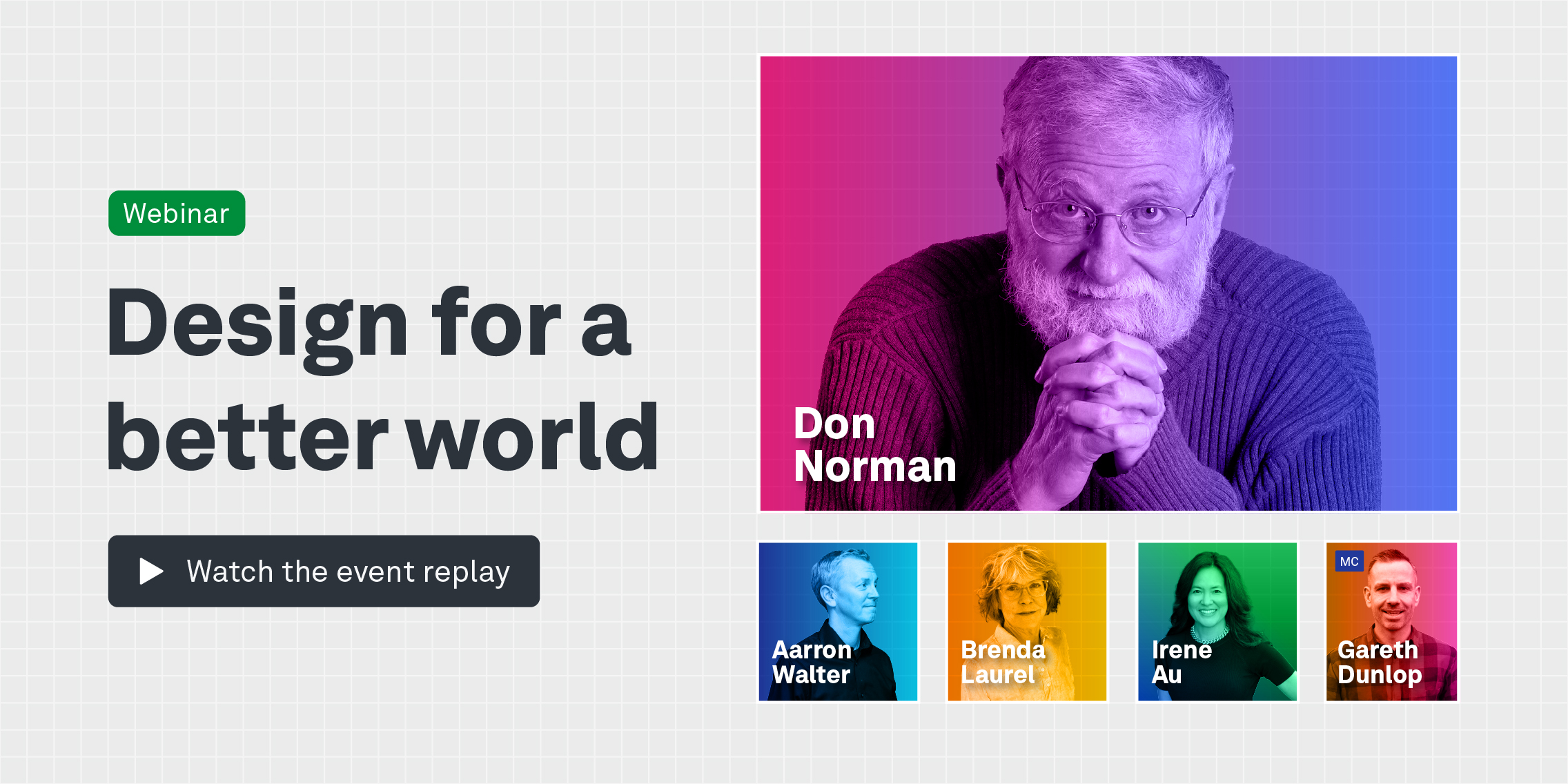Every designer needs their tools and Figma just so happens to be one of the most important ones. In our most recent UX Insiders live event, we learned some essential shortcuts and tricks for the prototyping tool but we also got the low down of design advocacy and how it can improve relationships between developers and designers when it is implemented in a working environment.
Luis Ouriach is a designer advocate at Figma and he was our most recent guest on our UX Insider live event. In his role, he collaborates with product, design and engineering teams to help improve and enable design at scale. He also creates best practice guides and content across written, audio and visual media.
In our session, Luis walked us through multiple prototypes and showed us efficient and time-saving shortcuts to use in Figma. For example, did you know that if you’re on a Mac and you hit Ctrl, command and spacebar in Figma, your emoji bar will pop up?
But for now, let’s hear more about his design background and the importance of design advocacy.
Luis, could you tell us a little bit about yourself and how you got into design?
I’ve been a designer professionally since 2011. I almost accidentally slipped into the industry by choosing a degree that had some kind of creative element inside of it. As part of that, I did a module which introduced me to web design and having been given the opportunity to see it, I really, really liked web design and front-end development. I sort of grabbed it and I’ve sort of not let go.
I really enjoy solutions. I’m quite a solution-oriented person and design has allowed me to do that.
Throughout this career, I’ve mostly worked as a solo designer or in design companies from ecommerce to charity, to news to hospitality to start up. I’ve sort of sampled lots of different areas of the industry. But right now, I really enjoy thinking about systems and structure and process and that sort of stuff. So that’s typically what I get to do on a daily basis.
Could you expand a little bit on what design advocacy is? And how exactly do you move into an area like that?
So a designer advocate effectively sits in the middle of marketing, sales, community product – basically every department. We’re the people who are publicly facing. We are also the people who typically have had experience as a designer and have either gone through a process of migration to Figma or generally just love the product and really like to evangelise for it. We are in air quotes “experts in the product”. We know it and we use it quite a lot.
We want to make sure that everybody else can understand it at scale and as fast as possible. That leads into things like creating resources, doing webinars, talks, events, customer sessions, as we have customers that we need to satisfy. We generally try to get everything that’s in our brain out to everybody else. That comes through for me in community resources; videos, tips, Loom videos, those kinds of things.
Are there particular areas or difficulties that you find yourself kind of returning to time and time again?
A designer advocate typically works with larger teams. We mainly start with 50+ designers in an organisation and we go in and advise on things like architecture of your Figma workspace. So your team structure, your project structure, your file structure, component naming conventions and structure, auto layout and naming of layers. We get really deep into all those real process-heavy elements.
There’s 10 or 11 of us now, so we all have individual specialisms in that field. One of us is really interested in illustrations and vector work, so they spent a lot of time with customers trying to debug and make better illustrations, icons and that kind of thing.
As I said before, I’m really into components, so I really love nerding out about that. Other people are really interested in things like organisation structure. So hiring, growing your design team and making that as effective as possible. In the STAR diagram of what a designer is, we all align with something on that star circle. We try to align our advice with whatever we find most interesting in that process.
Are there particular areas that you’ve really seen improve since you started working in design advocacy?
The interest in systems. And when I say systems, I mean… So basically, inside of Figma is a UI kit and outside of Figma is a design system. People are really, really engaged in building UI kits and building design systems. So that sort of trajectory over the past two years has been amazing. And it does mean that it’s forcing the industry into asking what is it? What is a system? What is a UI kit? What is its purpose? And who should be involved?
They’re the questions that we need to really answer from our perspective as an industry, and I really wanted to help to do that. As people with experience and who have access to speak to hundreds of people every day, we want to make it easier for you. So if you’re interested in UI kits and designing systems, now is an amazing opportunity to start learning about it.
In terms of making sure that you are maintaining the best practices, are there certain tools that have a definite longevity that all designers should get to grips with?
I think, ultimately, you need to get your idea out of your head and into a developer’s hands. And that the way that you do that, I don’t really mind as long as it happens fast, efficiently and at scale. So that could be using Figma as Canvas, it could be using a whiteboarding tool, it could be using pen and paper.
Whatever you need to get this into the hands of other people to build a product in an efficient and financially responsible way, I would back up 100%.
The tools, from a more practical perspective… Nobody’s quite cracked how to manage copywriting and design and how they cross over. There’s a tonne of different tools that allow you to do that, from something as simple as a spreadsheet to something as sophisticated as a SaaS monthly subscription tool. They can plug in as much as you need into your design tool but there’s still no perfect way to do it.
Additionally, getting the designs from a Canvas or from an image into front-end architecture is still really hard. Plugging the gap between design and code is also something that Figma is thinking about. But, again, nobody’s really cracked how to do it at scale, mostly because every engineering team is different. They have different coding practices, naming conventions, ways of working… That makes one blanket suggestion or tool for every designer nigh on impossible.
Because so many designers come from an independent way of learning or teaching, can universities match the pace of how fast design moves in real life practices?
I think from a bureaucracy point of view, it’s quite hard. There’s definitely courses that enable you to get up to speed quickly but I went to university and my degree was teaching me things that were five years behind. So that meant I needed to do a lot of work in my spare time to get up to speed. But there are definitely courses that get you there.
The question really isn’t to me about whether you are keeping up with the pace of the industry, it’s whether you’re taught the skills that you need to be a good employee. And that is basically being curious, being interested. Having this “do it attitude” that will enable you to firstly get a job but also to excel in a career. There’s been an incredible amount of people in the past few years who have transitioned to something like software engineering by taking a bootcamp – and that’s somebody who hasn’t traditionally been engineering focused.
My brother has done it. He started in marketing and he’s got a literature degree but he transitioned to become a software engineer because he had the right mentality and the right skill set to apply it. I think that as long as you can teach people to apply yourselves and be interested, curious and know how to go and get answers to questions, it should be fine.
Don’t assume that you’re gonna get taught everything at university, you still have to put the work in.
The tooling can always be taught. So whenever I speak to design teams who are hiring designers who maybe don’t know Figma yet, I say I don’t really mind because you can teach somebody Figma in an afternoon. You can’t teach them how to be a great thinker and how to come up with solutions to problems.




